With its humble beginnings of a web novel that sought to poke a finger at the trope of overpowered characters in popular shounen anime, it is remarkable to witness the franchise of One Punch Man achieve the stature and popularity of the very content it sought to satirize.
The anime follows a self-effacing jobless man called Saitama as he rises to the occasion and protects a kid from a humanoid crab. An incident that veers him towards the ambition of becoming a superhero “for the fun of it”. Ordinary Saitama, then, begins the intense training regimen that overpowers him to the point that he could leave monsters in the dust with just a single punch.
The key to Saitama’s power, his training regimen, is revealed in the third episode of the anime. The anime hits the perfect note of comedy through the anti-climactic and simple deus ex machina that powers our pitifully bored superhero and made him bald.
And it is this very training regimen that has piqued the interest of fans worldwide, enough to motivate them to exercise and cause a drop in the viewer rates of the show. Here, I am going to address the insanely simple One Punch Man workout, as it is known now, and how much of it a person can actually achieve!
The One Punch Man daily workout of 100 push-ups, 100 sit-ups, 100 squats, and a 10k-run is not a well-balanced program but with certain modifications, it can definitely make you one step closer to the One-Punch Man.
Understanding the OPM Workout
To quote Saitama himself,
the workout consists of, “100 push-ups, 100 sit-ups, 100 squats, 10km running every single day”.
Saitama continued his training regimen for 3 years until he became incredibly overpowered. Within one and half years of that workout, Saitama loses his hair due to the intensity.
Now we’re set to understand what the workout consists of, how effective it is in reality, and the modifications needed if required so that we can venture into fitness by being a little closer to our favorite superheroes.
Background & Benifits
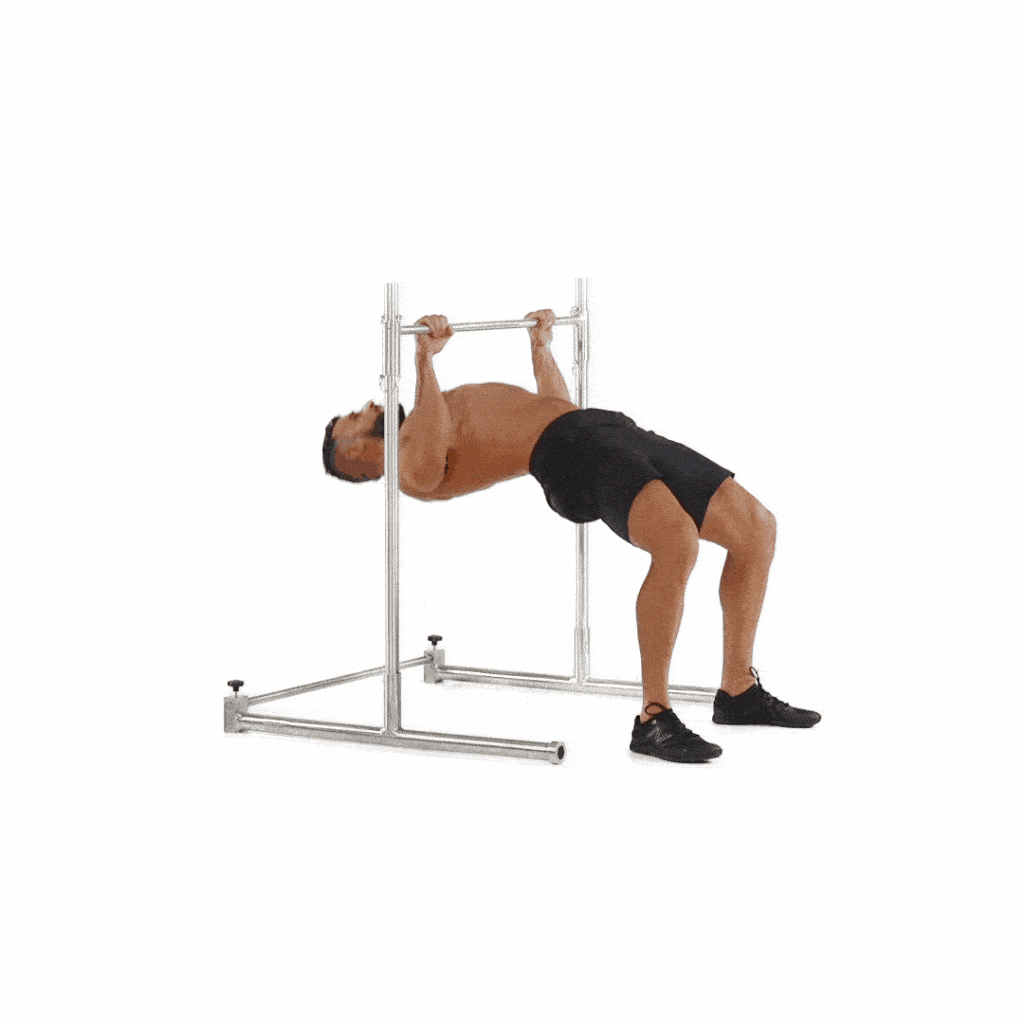
All of the exercises listed within the OPM workout come under what it is termed as ‘calisthenics.’ The appeal of calisthenics is its accessibility to the world. Calisthenics include exercises that merely require a person’s bodyweight to exercise large muscle groups, which thereafter, increase strength, endurance, flexibility and fitness.
The workout listed is superior to the gym as it focuses on major movement patterns such as pushing motion (push-ups), core-training (sit-ups), leg training (squats) and some cardio workout (running).
They’re called compound bodyweight exercises because they tend to target more muscle groups than one does in a natural pattern. These workouts have less risk of injury, no cable curls, no forced machine movements and the high-reps of these bodyweight exercises results in great muscular endurance and cardiovascular conditioning.
The workout incorporates strength work and road work, an old boxing term for running. Push-ups, squats, and sit-ups are generally harder when you gain inefficient weight. This bodyweight workout, however, does a great job of regulating fat and encouraging muscle gain. The workout pulls through if one’s goal is oriented towards endurance training and weight control.


The graph showcased above is from a study on “The effects of calisthenics training intervention on posture, strength and body composition” by E. Thomas et al which shows the progress of the SG group which trained three times a week and the CG group which did not engage in any structured training and went on with their daily routine. It can be concluded that the SG group showed significant improvement in the number of reps they could perform due to endurance building.
Another advantage of the workout is its volume which is beneficial for beginners. Performing full body movements and going for a run afterwards helps build a stronger cardiovascular system. Moreover, the workout density will improve one’s work capacity through adaptation and will get the practitioner in better shape quickly. This can be explained by the concept of SAID (Specific Adaptations to Imposed Demands) principle that exists within the world of training. It centers around the fact that the body will adapt to and get good at the stimulus you provide it. Even if the stimulus feels difficult, the body will adapt to it when complemented with proper rest and recuperation.
Gradually, the initial stimulus you provide will become easier to bear and allows you to execute the action efficiently. It is important to note that the key to Saitama’s power is his consistency. Despite not having any natural affinity to athleticism, Saitama chose a workout that he was determined about and capable of sticking to it.

Therefore, it is important to choose a workout program that suits your needs and that you enjoy enough to be consistent with. A defining trait of his workout is its repetitive movements. The Overload and Simplicity principle of exercise physiology does support the working of the same muscles every day. One of the benefits of compound workouts is they make efficient use of time and engage multiple muscle groups thereby burning more calories than one would in an isolation exercise.
Another benefit of compound exercises is the ability to improve our intermuscular coordination. In these exercises, the muscles must work together to produce the force to lift and control the force to execute the movement properly.
Therefore, the more frequently you perform the workouts, the more efficiently you can carry out the technique and movement. And because of the intensity of the movements, the heart is required to pump more blood to keep the muscles active and fueled to carry out its tasks, hence, the immense cardiovascular benefit.
The oxidative capacity and mitochondrial activity increase quickly with frequent training. And since exercise is an adaptive process with regular training, the body engages in chronic adaptation. For high-level athletes, performing 100 reps or 10km runs is not the most difficult workout but it is quite significant for a beginner and can improve one’s fitness exponentially.
As Genos states, “it’s just a basic conditioning training”, which is exactly why it appeals to so many fans. However, Saitama’s workout is only effective if your goals are aligned with the results it achieves which is strength, endurance, and a lean body. With each compound workout, it covers each primary muscle in the upper body, lower body, and core.
Push-ups cover shoulders, deltoids, trapezius, chest and upper abs. Sit-ups cover abs, oblique and lower back. Squats cover quads, hamstring, hips, calves, knees and back. Running boosts endurance and increases VO2 (maximum rate of oxygen consumption) and mitochondrial oxidative capacity.
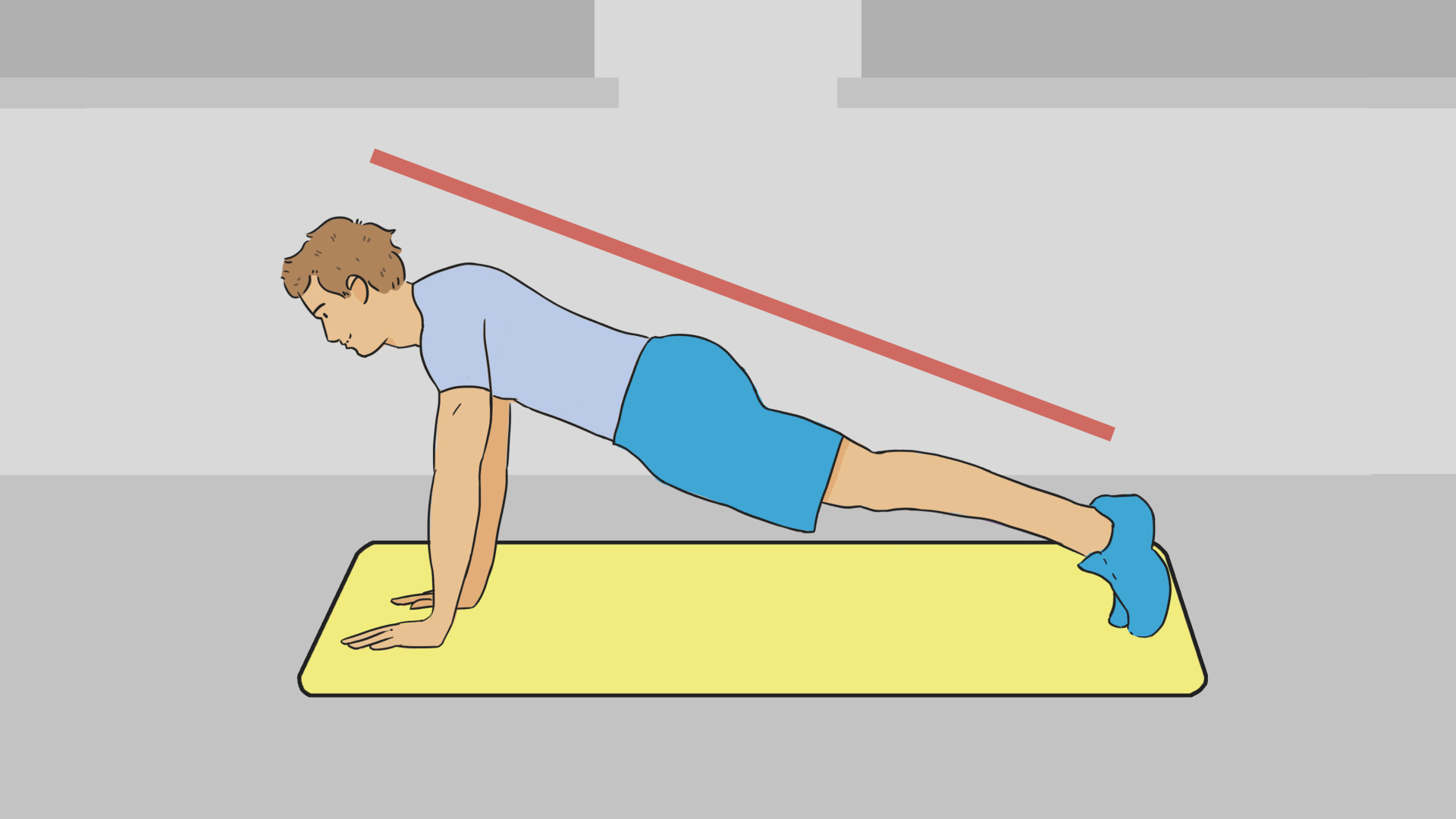
When it comes to endurance training, research shows that higher reps help adapt faster to training. This is why calisthenics is the perfect workout to choose as it requires higher reps in its training regimen. This is because of what it is termed as “Progressive Overload” in strength training. Simply put, it refers to the amount of stress or demand you put on your muscles that help build strength and muscle.
The Workout & Calisthenics
Calisthenics do not require any fancy equipment or weights so to increase the amount of stress you put on your muscles, it increases the reps (repetitions) and sets of the exercise. Some of the other benefits of bodyweight exercises are that they don’t require any gym equipment and can be performed anywhere.
The training regimen of One Punch Man workout is simple enough for anyone to follow and the challenge of it is fun and motivating. A study published in ACSN’s Health & Fitness Journal on the effects of bodyweight-only circuit training (like the One Punch Man workout) states that,
“HICT seems to be an efficient means of exercise to help decrease body fat, improve insulin sensitivity, and improve VO2 max and muscular fitness.
As the hectic pace of today’s corporate world continues to infringe on the amount of time individuals have for exercise, these types of programs can offer a good option to help busy individuals improve their health and recover from stress via exercise.
The practicality and accessibility of HICT using bodyweight as resistance make this exercise program a viable option for the masses“.
An advantage of this workout is that it sticks to the same exercises. Increased frequency of different exercises in a workout program is counterproductive. This is because if one wishes to increase their strength, they must specialize in movements that have maximum carryover to their physical endeavors (mechanical power output or the ability to carry out a task).
It is possible to diminish gains by doing different exercises. Therefore, it is best to build strength in one primary movement that has maximum carryover to other movements. Indeed, leg training is an essential part of bodyweight training. The calisthenic leg training involves the movement of the entire body through space which encourages balance and stability all the while building a lot of size and strength.
Saitama chooses squats for his leg training which is the optimal solution as it has unparalleled carryover to size, strength and Ground Reaction Force generation. Ground Reaction Force (GRF) is the force exerted by the ground on the body of the person that is in contact with it. Due to movement, the GRF increases due to acceleration forces.

It simply refers to the ability to jump higher, run faster and punch harder (which is Saitama’s forte). As mentioned before, cardiovascular training strengthens our heart which allows us to increase our work capacity. This is witnessed in Saitama’s “Consecutive Normal Punches” where he lets out a series of sub-maximal punches without barely breaking a sweat.
According to WebMD, the number of calories you use while doing calisthenics depends on several factors such as your weight and age. But on average, doing calisthenics for 30 minutes burns:
| Weight (Pound) | 125 lbs | 155 lbs | 200 lbs |
| Calories Burnt (Normal Calisthenic) | 135 cal | 167 cal | 200 cal |
| Calories Burnt (Intense Calisthenic) | 240 cal | 298 cal | 355 cal |
Therefore, the workout is great in its ability to create endurance, significant calorie deficit, strengthen the cardiovascular system without the need for any external equipment. However, there are a few problematic aspects of the workout that make all the difference.
Drawbacks of OPM Workout
No matter how appealing the One Punch Man workout looks, in its purest form, it is incomplete for real-world applications. Before diving into this, it is best to understand two key concepts in fitness: intensity and volume.
Intensity refers to the difficulty in executing the movement which is normally increased by adding factors such as weight. Volume refers to the number of movements you can achieve at a set weight. In resistance training, the body goes through three types of adaptations.
- First, one is subjected to high volume/low weight exercise which primarily results in endurance and stamina.
- Second, is low volume/high weight exercise which results in increased strength.
- Finally, middle volume/middle weight exercises which result in size gains called hypertrophy and is mainly what bodybuilders aim for.
Saitama’s workout mainly bases itself on the first adaptation of high-volume way more excessively than required. For a physically fit person, it won’t have any effect and for a beginner, the load is too much to start with.
It is extremely important to provide a challenge to your muscles so they can adapt and it is equally important to gradually work up towards the reps to prevent any serious injury. Another problem of the Saitama workout is the lack of progressive overload.
For beginners who aren’t used to the workout, this workout can effectively provide benefits for a solid period of time as the exercises provide a challenge to their muscles which need to adapt. But eventually, the practitioner is bound to plateau as the muscles adapt and the challenge is no longer a challenge for it anymore.
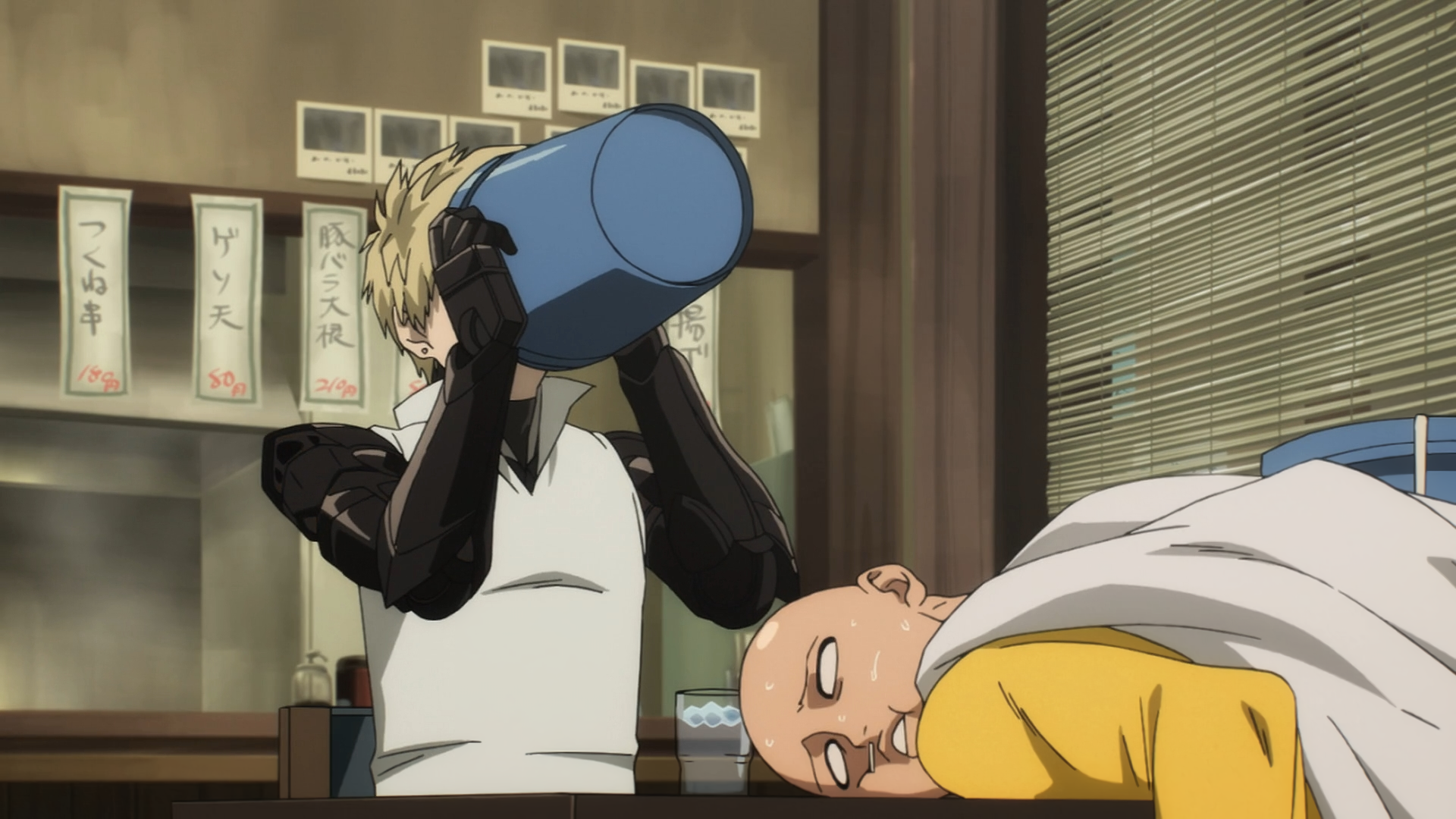
Therefore, the workout isn’t viable for a longer period of time. The solution to this is to incorporate progressive overload by either increasing the reps or including variations of the exercise that adds to its intensity.
For example, once you plateau, you can switch to jump squats similarly with push-ups where you can switch to inclined push-ups, clap push-ups and others. With repetitive movements, what problem arises is that they only allow you to move efficiently in those single movements.
Luckily, the three movements selected are great compound movements however, it misses one major movement and important part of the body – the back. A strong back is key to longevity and a fulfilling life. However, the lack of pulling movement that targets the back is extremely problematic and leaves the body prone to a bad posture and injury.
While the push-up trains the chest, shoulders, abs, triceps, sit-ups train the hip flexes and abs and squats mainly exercises the glutes and quads (lower body muscles) – the muscles such as latissimus dorsi, trapezius, rhomboids and rear deltoids are neglected.
They’re extremely important muscles for an evenly trained body. The addition of pull-ups or other back building exercises can alleviate this issue. Another issue with the movements is the sit-ups which are not the most optimal exercise to build a core.
Increased sit-ups on a daily basis can stress the lower back quite a bit which can further lead to serious issues. There are better and safer core building exercises such as a simple crunch or the plank that can provide better results and keep you safe from any injuries. However, it is advised to not do crunches frequently either as it could lead to the same problems (once or twice a week is best).
Body rows are also great for replacing sit-ups as they activate the back muscles. The last problem with the exercises is the 10kilometer run (6.2 miles). While running it is extremely important to have the right technique and experience. It also puts pressure on the knee joints which can be quite detrimental to your fitness if not supervised.
Therefore, if one is inexperienced, it is advisable to start running with short distances such as 1-3km (0.6-1.8 miles) runs so you can adapt and work up to the original goal. The most important issue with the workout is that it schedules a workout every day which is counterproductive to the results you’d wish to achieve.
Rest periods in a training regimen are extremely crucial to maintain your gains and efforts. In sports science theory, there exists the model of ‘supercompensation‘. The body goes through several stages to adapt to a higher level of performance in which the final one includes the actual gains. Supercompensation is the final stage in this aspect which is preceded by fitness, training and recovery.
The period of recovery is an important precursor to the stage of supercompensation as it allows the body repair the damage inflicted on the muscles and grow stronger to adapt to the stress that will be given to it in the future. Therefore, in the final stage, the muscles grow back stronger and represent the results that you have achieved.
In a study conducted by Cheri D. Mah et al on the effects of sleep on athletic performance concluded that,
“Improvements in shooting percentage, sprint times, reaction time, mood, fatigue, and vigour were all observed with increased total sleep time. These improvements following sleep extension suggest that peak performance can only occur when an athlete’s overall sleep and sleep habits are optimal“.
It also reduces the mental fatigue that can be a hindrance to performing tasks as concluded from the study conducted by Samuel M. Marcota, et al which provided experimental evidence of how one group with mental fatigue believed they exerted significantly more amount of efforts in carrying out the same task than the other group which was in a neutral or relaxed state.
So, a lack of rest periods will only lead to overtraining which can cause muscle soreness and injury alongside diminishing the efforts that you made before. It is important to have consistent progress with adequate rest periods. Easy exercises with little to no fatigue need a shorter time of recovery than hard exercises.

Another con of this workout is that it is extremely time-consuming. For a person who lives in the real world with real-world commitments such as a job, academics, family and relations – it would be hard to take put time to do all the exercises in just one day.
This is also not an effective workout if your goal is hypertrophy (muscle size growth). It doesn’t build excellent force production, unlike ones through heavy weightlifting.
Finally, the amount of cardiovascular activity is catabolic and can eat into your recovery which can lead to several injuries. It will also diminish the efforts you made through bodyweight exercises.
An analysis of 21 studies based on concurrent training (both cardio and strength) by Wilson et al. in 2012 revealed that power is negatively affected by concurrent training while strength training alone allows greater power development, especially in the lower body.
However, strength and hypertrophy in the upper body were unaffected by the concurrent training. It was noted that the volume of aerobic training was a major factor into whether concurrent training negated strength, power and hypotrophy gains.
The lower volume of aerobic training helped maintain the strength, power and hypertrophy gains. Concurrent training was also observed to be significantly greater in its reduction of body fat percentage as compared to strength or cardio training alone.
Therefore, it is best to reduce the amount of cardio either to 2-3 days for less than 20 minutes. The workout in its original form is not for beginners, intermediates or even advanced trainers as it will eventually break everyone due to its unbalanced regimen.
More Practical Version
One of the recommended ways to go about the One Punch Man workout as recommended by Ryan Sadilek, a certified personal trainer, on his YouTube channel Minus The Gym.
He adds 50 pull-ups to the exercise and replaces sit-ups with any core building exercise of your choice. Along with it, he also recommends that the exercise be done in a circuit which means that they are done in multiple rounds over a longer period of time throughout the day.
And for cardio, he advises replacing 10km running with jogging, sprints or High-Intense Interval Training (HIIT) at the end. As per his schedule, one day of exercise includes:
- 5 Rounds
- 20 push-ups
- 10 pull-ups (for example, Bodyrows)
- 20 squats
- 20 core building exercise (such as planks, Hollow body hold, L-sit progressions)
Most importantly, he advises people to include variations in their workout program so it doesn’t lead to stagnation. A lot of accounts of OPM workouts have hit plateau in the first few weeks or in 30 days and have had to up the intensity or reps to further challenge their muscles.
If by any chance, the reps are too much for you, it is advisable to exercise within the limits of your body and work your way up to the reps provided. It is advisable to exercise only 3-4 days per week and add at least 2 days of rest. For a beginner, it is best to begin with smaller reps such as level 1 of 20 push-ups, squats, core exercise every day.
Your schedule if you wish to work your way to the reps could look like:
| Week | Monday | Wednesday | Friday |
| 1 | 5×5 Push-Ups, 5×10 Core exercise, 5×5 Squats | 5×6 Push-ups, 5×11 Core exercise, 5×6 Squats | 5×7 Push-ups, 5×12 Core exercise, 5×7 Squats |
| 2 | 5×8 Push-ups, 5×13 Core exercise, 5×8 Squats | 5×9 Push-ups, 5×14 Core exercise, 5×9 Squats | 5×10 Push-ups, 5×15 Core exercise5x10 Squats |
| 3 | 7×6 Push-Ups, 7×10 Core exercise, 7×8 Squats | 7×7 Push-ups, 7×11 Core exercise, 7×9 Squats | 7×8 Push-ups, 7×12 Core exercise, 7×10 Squats |
Soon, once you build your endurance, you can minimize the sets and increase reps with appropriate rest time (2-3 minutes in between sets). But it is important to remember that this will take time.
Your Diet & The Workout
While Saitama strongly recommended not to skip breakfast even if it means just eating a banana, in realistic standards, that won’t suffice. 2 major necessities to keep in mind for diet is that protein intake should be at least 0.8g per pound of bodyweight (almost have a kg) and a more balanced diet with vegetables which make bowel movements easier, balances the body’s pH, and gets your body more vitamins and minerals.
Here are some pointers to keep in mind while regulating your diet:
- Consume whole foods such as lean protein, proteins including meat, fish, seafood, and eggs. You must include fresh produce such as dairy, grains, fruits, and vegetables into your diet.
- Avoid junk food, processed food, and any food with a lot of carbs.
- Fruits and vegetables such as spinach, kale, broccoli, spuds, tomatoes, and bananas are great because they’re low in calories and high in fiber. Choose any fruit or vegetable that are high in fiber and low in calories.
- Opt for Intermittent Fasting. Most calisthenics athletes choose to do intermittent fasting along with their workout as it shortens their eating window. In intermittent fasting, one eats for only 8 hours a day (except for water, coffee, and tea). Due to the limitation on the eating window, you tend to focus more on nutritional diets rather than light snacking every now and then.
- It is important to understand that there are several factors that result in weight loss, factors such as genetics (body type, metabolism), diet, and exercise.
- There are three types of body types – ectomorph (skinny frame), endomorph (excess fat and low muscle definition), mesomorph (larger body frame with low body fat percentage). The website caliathletics recommends the percentage of carb intake for all three body types to help reduce body fat during the calisthenics training regimen. Ectomorphs are advised to keep their carb intake at least 50-60%. Whereas, endomorphs are advised to restrict their carb intake between 30-40% or even less. Finally, mesomorph body types must maintain a 40-60% carb intake.
If you feel the need for supplements, Rebecca Smith, a calisthenics instructor who holds a diploma in nutrition, recommends BCAA (branched chain amino acids), creatine and multivitamins (that include Vitamin C, D, E, B complex, zinc and magnesium).
The OPM Case Studies!
#1 YouTuber Sean Seah
One of the most popular accounts of the One Punch Man workout was by the Singaporean Sean Seah. After the Chinese New Year, 38-year-old Seah felt quite unfit. Before the workout, he weighed 70 kg, had the body age of 40 and a visceral fat rating of 10 (which caused a pot belly).
On Feb 10, Seah began at level 5 of the One Punch Man challenge which is 50 push-ups, 50 sit-ups, 50 squats and 5km run daily. By day 7, Seah lost 2.8kg, his body age stood at 37 (-3) and visceral fat rating stood at 9 (-1).
On Day 17, he had plateaued and was no longer making any significant progress so he decided to level up to level 7. He began to do 70 push-ups, 70 sit-ups, 70 squats and a 7km run daily. On Day 22, he brought the challenge to level 9. By Day 23, he switched to level 10.
On Day 30, Sean Seah’s visceral fat was at 8.5, his body age at 36 and his weight at 65 kg. In terms of diet, he revealed a normal 3-meals-a-day diet with special focus on reducing sugar, carbs and fried food. He switched his coffee to a plain black coffee and replaced snacks with fruits, especially bananas.
Sean Seah took the challenge up to 300 days, at the end of which, his weight remained at 65 kg, his visceral fat rating was at 8 and his body age was at 34.
#2 YouTuber Brandon William
Brandon William performed the One Punch Man challenge for 100 days and tracked the progress. William modified the regimen by reducing the 10km run to a 1.6km (1 mile) and doing 50 pull-ups to make up for it. He claimed that from “day 30 to day 70” he plateaued.
He was witnessing little to no strength gain. William says, “working out every single day is not ideal for muscle growth” and “muscles need rest in order to repair and grow back stronger”. So, in order to improve his performance in the final 30 days, William incorporates 2 days of rest per week.
He also switched to sit-ups after doing crunches the first 30 days. In the final 30 days, he also included some progression by adding a weighted vest into the squat and push-up routines with an extra 50 pull-ups. He added 12kg kettlebells to his squats for extra gains on Day 94. After doing the exercise for 100 days, he could do 80 push-ups in a row.
He also concluded that he gained some muscle mainly in the arms and chest but his gains were nowhere near as visible as they were in the first 30 days. He recommends beginners to try the workout only for the first 30 days. He concludes that if one wishes to gain strength and muscle quickly, they should hit the weights. As for his diet, he mentions that he added more greens and protein while avoiding junk food.
#3 Youtuber Tyler Oliveira
Tyler mentions in his video that he did the workout for 30 days but was unable to see any visible differences (except for his calves) on his body as the schedule didn’t allow his body to regrow the muscles that he tore down during the workouts.
For the next 30 days, he reduced his workout days to 5 per week and included 2 days of rest. He also reduced the running distance from 10km (6.2 miles) to 6.4km (4 miles). From Day 60, he began his workout routine with a 3.2 mile (4.9km) run, 100 push-ups, 100 sit-ups and 100 squats. But each day he would increase the amount he ran from 3.1 to 3.2 miles and so forth.
And with each week, he would increase the volume of exercises by 10 reps. He advises his audience to use a mirror to help maintain their forms while exercising. Oliveira’s form improved greatly over the 100 days. He also makes a change in his diet to consuming protein-rich foods such as chicken and eggs.
On Day 79, Oliveira observed that there were visible definitions of abs with a thin layer of fat. He also states that the workout was taking a toll and that he “dreads waking up to these push-ups and squats.” However, he also adds, “but the run is relaxing, I’ll give it that much”.
He states that it is difficult to stay motivated as he doesn’t see a ton of results already. He summarizes as it as mental and physical fatigue at working out as One Punch Man as it is quite monotonous in its repetitions. He also claims he feels a mild pain in his ankle, knee and shin.
On the final day, Oliveira tallies his weight loss at about 5 or 6 pounds (around 2 kgs) and observes that his body had gotten more toned especially his arms and biceps.
However, he also observes that his pecs have become little less defined due to a lot of cardio. He concludes that it is an impressive workout when it comes to mental and physical discipline, however, he states that he would have progressed more if he had opted for alternate workout programs.
Can anyone pull off the OPM Workout?
Without modifications, the success rate of One Punch Man workout is estimated to be around 0.6-2.7% if the assumption is that most people can reach 30 days without plateau. With modifications, the chances can reach as far as around 9% considering that the few reached 100 days out of 1095 days (3 years that Saitama took).
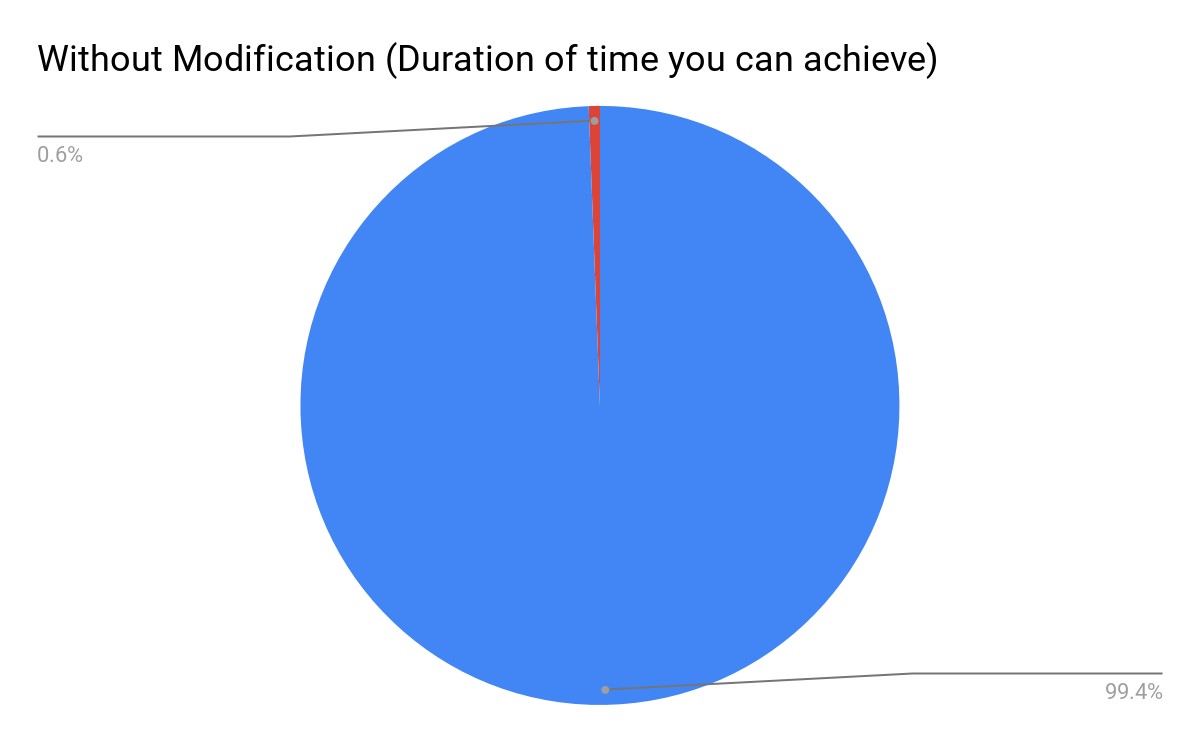
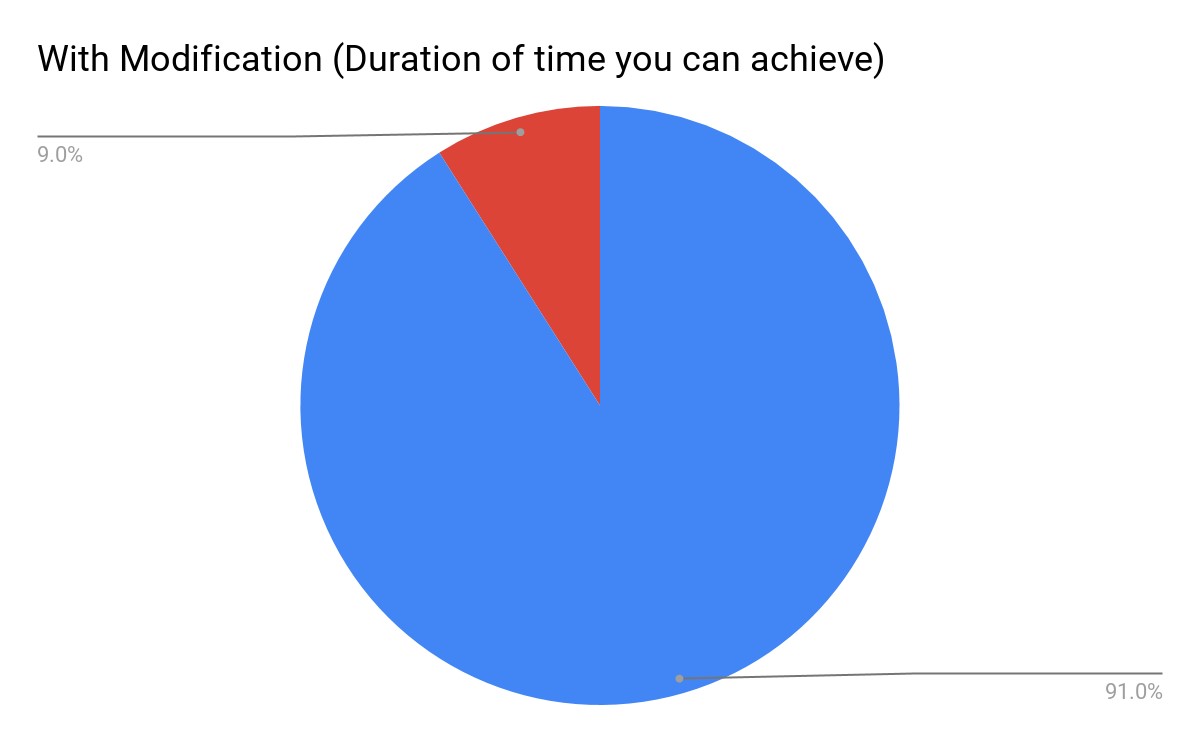
Conclusion
The original One Punch Man workout is not a well-balanced program that can provide the sculpted muscular body and strength equivalent to Saitama’s. There are better well-balanced programs that yield better results in lesser time and are fun to execute.
One Punch Man workout with modifications of progressive overload, rest periods, pulling movements, and adequate balance of cardio and strength training can be rewarding but the time investment and efforts are better indulged in workouts that yield faster and better results.
However, two important principles to take from this challenge is the determination and consistency that you should employ into any of your training regimen as a way to lead a healthy life.

About One Punch Man
One-Punch Man is a Japanese superhero webcomic created by the artist One in early 2009. It has a manga adaptation illustrated by Yusuke Murata, as well as an anime adaptation. Following its publication, the webcomic quickly went viral, surpassing 7.9 million hits in June 2012.
On an unnamed Earth-like supercontinent planet, powerful monsters and villains have been wreaking havoc in the cities. To combat them, the world’s government created a Hero Association that employs superheroes to stop them. The heroes are ranked from Class C to Class S.
Saitama, an unassociated hero, hails from the metropolis of City-Z and performs heroic deeds for entertainment. He has trained himself to the point where he broke his “limit” and can effortlessly defeat any opponent with a single punch while slaying monsters the same way. But he is now bored with his omnipotence and frustrated by sensing he lacks a challenge.










No Comments on Is the One Punch Man workout possible? – OPM Workout Guide